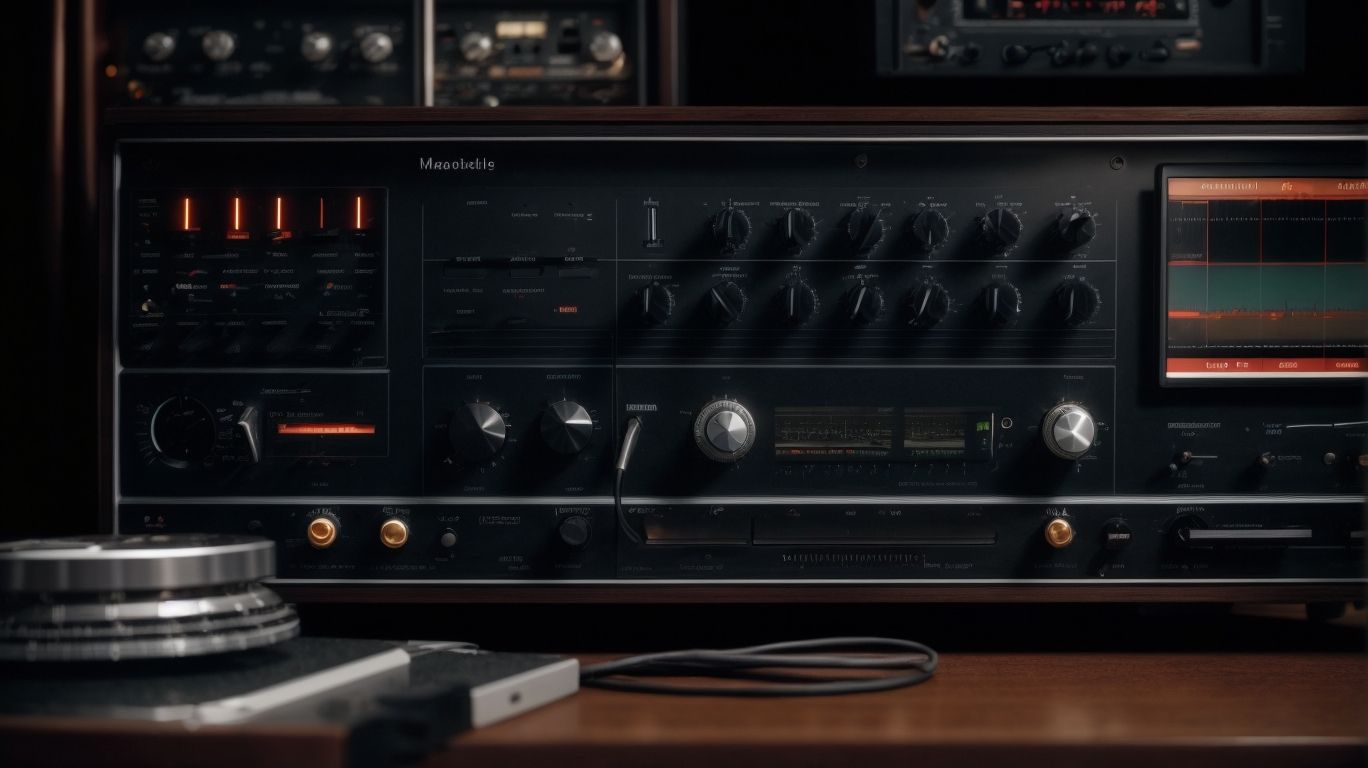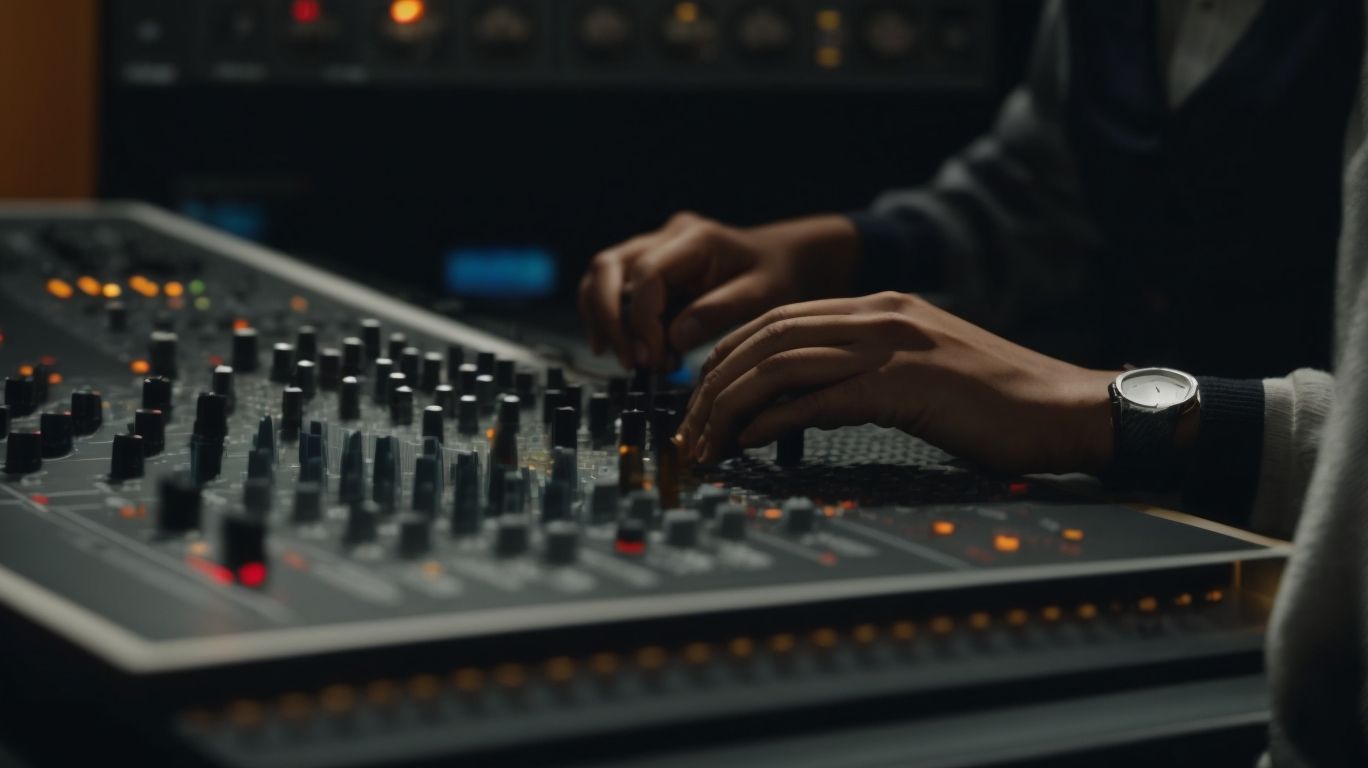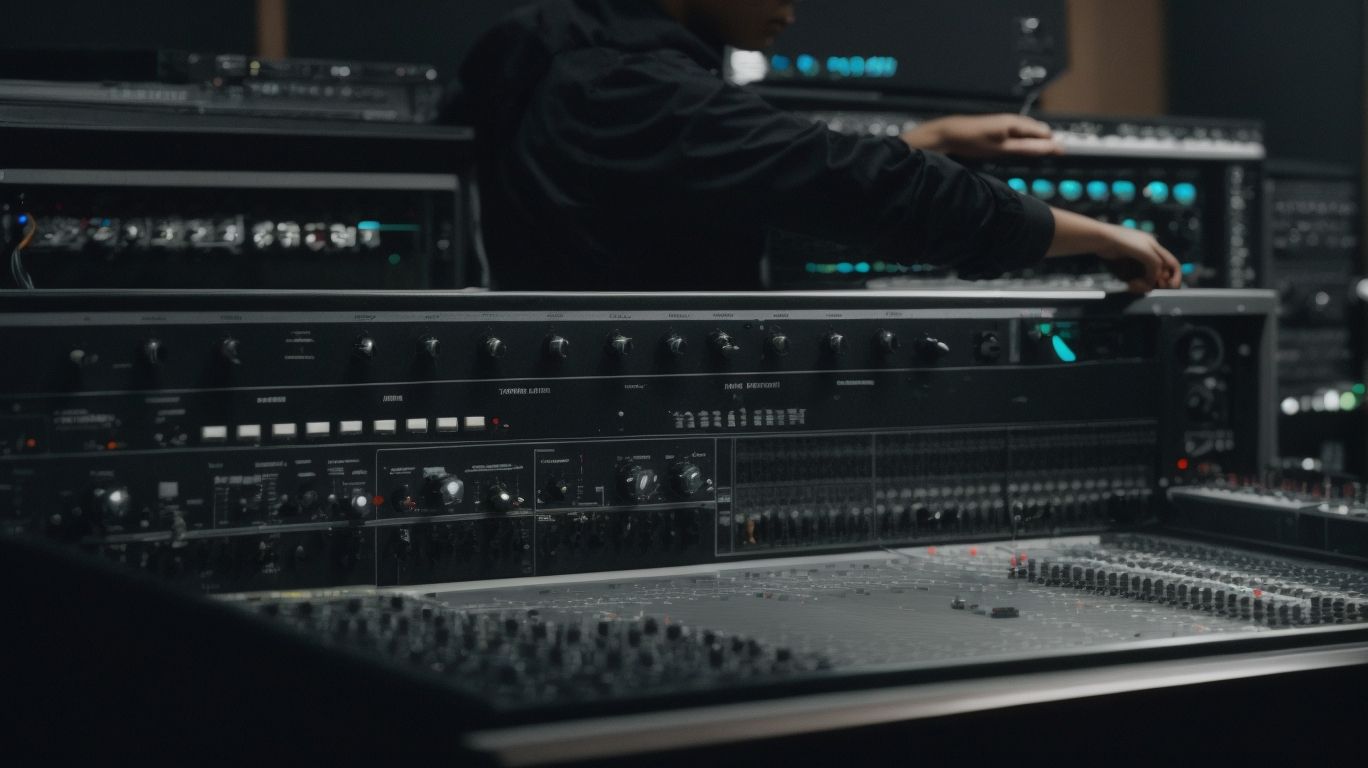No products in the cart.
In the world of audio mastering, achieving the perfect balance of loudness is crucial for creating a polished and professional sound. Understanding the concept of loudness and its importance in mastering is essential for any audio engineer or producer. In this comprehensive guide, we will delve into the intricacies of loudness in mastering, exploring factors that affect loudness, different loudness standards, measuring techniques, and most importantly, essential tips and tricks to optimize loudness in mastering. Whether you’re a seasoned professional or just starting out in the world of audio production, this article will provide you with valuable insights and practical strategies to enhance the loudness of your music. Let’s dive right into the world of mastering and unlock the secrets to achieving the perfect loudness for your tracks.
Key Takeaways:
- Loudness is the perceived volume of a song and is an essential aspect of mastering.
- Factors such as dynamic range, compression, equalization, and limiting can greatly affect the overall loudness of a track.
- To optimize loudness in mastering, use reference tracks, multi-band compression, parallel compression, mid/side processing, and mastering limiters.
What is Loudness in Mastering?

Credits: Www.Productlondon.Com – Steven Jones
Loudness in mastering refers to the perceived volume or amplitude of a finished audio mix, which is crucial for achieving a balanced and impactful sound. It encompasses the dynamic range, frequency distribution, and transient emphasis of the audio, often influenced by techniques such as parallel compression.
The dynamic range of a mix is the difference between the loudest and quietest parts, influencing the overall perceived volume. Ensuring an optimal frequency distribution across the audio spectrum is essential for a well-balanced and full-bodied sound. Transient emphasis plays a significant role in defining the punch and impact of the audio, especially in genres like rock and pop.
Why is Loudness Important in Mastering?
Loudness holds significant importance in mastering as it directly influences the perceived impact and clarity of a musical piece. By carefully adjusting the EQ, frequency ranges, and dynamic range, mastering engineers can create illusory dynamics that enhance the overall listening experience.
In terms of mastering, achieving the ideal loudness involves a delicate balance of various elements. EQ adjustments are vital in sculpting the tonal balance, ensuring that each instrument occupies its rightful place in the mix. Manipulating the frequency ranges allows for precision in accentuating certain sonic characteristics, contributing to the depth and fullness of the sound. Careful management of the dynamic range ensures that the music maintains its emotional resonance and impact, capturing the listener’s attention and evoking the intended mood or feeling.
What are the Factors that Affect Loudness in Mastering?
In mastering, several factors influence the perceived loudness of a mix, including the application of compression, limiting, and careful management of frequency shifts to control extraneous lows and accentuate the desired tonal characteristics.
Compression plays a pivotal role in managing the dynamic range of the audio, ensuring that quieter elements are brought up while avoiding peaks that could introduce distortion. By strategically adjusting the ratio, threshold, and attack/release parameters, the compressor can tame unruly transients and create a more consistent overall volume.
Similarly, limiting acts as a final safeguard against excessive peaks, effectively capping the maximum level of the audio signal. This prevents distortion and maintains a more controlled, impactful sound without sacrificing clarity.
The strategic handling of frequency shifts, particularly in the low end, plays a crucial role in shaping the perceived loudness. By attenuating muddiness and emphasizing the fundamental frequencies, the mix can project a more powerful and defined low end, contributing to its overall impact and cohesion.
Dynamic Range
Dynamic range in mastering refers to the difference between the quietest and loudest parts of a musical piece, and its careful management is a fundamental technique for achieving optimal digital loudness while preserving the intended emotional dynamics of the audio.
One of the key aspects of managing dynamic range in mastering involves using compression and limiting techniques to control the amplitude of the audio signal. Compression reduces the dynamic range by attenuating the louder parts, while limiting ensures that the peaks of the audio signal do not exceed a certain level. These techniques help to achieve a more consistent and controlled loudness, enhancing the overall impact of the music.
Compression
Compression, a pivotal tool in mastering, enables the control and shaping of the audio’s dynamics, often involving techniques such as linear phase processing and strategic frequency shifts to enhance the perceived loudness and tonal balance of the mix.
Linear phase processing plays a crucial role in maintaining the integrity of the original audio signal, particularly when dealing with low-frequency content. This method ensures that the phase relationship between different frequencies is preserved, resulting in a more transparent and natural sound. Strategic frequency shifts can be used to address specific tonal imbalances within the mix, enhancing the overall cohesiveness and clarity.
Equalization
Equalization plays a crucial role in mastering by sculpting the frequency content of the audio, influencing the perceived loudness and emphasizing transient details to create a more immersive sonic experience.
When a mastering engineer applies EQ, they strategically adjust the levels of specific frequency bands to balance the overall tonal quality. This has a substantial impact on the clarity and definition of individual instruments and the mix as a whole. Furthermore, EQ can be used to address any tonal imbalances stemming from the recording or mixing stages, ensuring that the final master exhibits a cohesive and polished sound.
Limiting
Limiting, a vital process in mastering, involves carefully controlling the peaks of the audio to achieve desired loudness levels while preventing unwanted distortion, often incorporating frequency slotting techniques to maintain tonal clarity and impact.
By utilizing frequency slotting, the mastering engineer can strategically allocate specific frequency ranges within the audio signal to different bands, allowing for individual control over each band’s dynamics and limiting parameters. This ensures that the low-end remains tight and well-defined, the midrange retains warmth and presence, and the high frequencies remain crisp without harshness.
The use of multiband limiting enables targeted processing of problematic frequency areas, effectively managing dynamic peaks and transients across the audio spectrum. The carefully tailored application of limiters to various frequency ranges helps in preserving the overall tonal balance while achieving the desired loudness levels.
What are the Different Loudness Standards?
In mastering, various loudness standards are used to measure and regulate the perceived volume and amplitude of audio, including LUFS (Loudness Units Relative to Full Scale), RMS (Root Mean Square), and Peak Level, each offering distinct insights into the dynamics and peak amplitude of the mix.
LUFS, commonly used in measuring the perceived loudness of audio, provides a standardized way to control and maintain consistent loudness levels across different tracks. It takes into account human perception of sound and offers a more accurate representation of loudness.
RMS, on the other hand, assesses the average power of the audio signal, serving as a valuable tool to analyze the overall energy and loudness variations within a song.
Peak Level measurement targets the highest point of the audio signal, crucial to avoid distortion and clipping, ensuring the audio signal does not exceed the maximum digital ceiling without unwanted artifacts.
LUFS (Loudness Units Relative to Full Scale)
LUFS, a prevalent loudness standard in mastering, is utilized by streaming platforms such as Tidal and Apple Music to ensure consistent loudness levels across different tracks, providing a standardized listening experience for the audience.
As streaming services become the dominant mode of music consumption, LUFS plays a crucial role in maintaining a uniform audio experience for listeners. By adhering to the LUFS standard, platforms like Tidal and Apple Music can ensure that neither excessively quiet nor overly loud tracks adversely impact the seamless transition between songs. This standardization enables users to enjoy a balanced audio experience, irrespective of the diverse production techniques and mastering styles employed by artists and music producers.
RMS (Root Mean Square)
RMS, a fundamental measurement in mastering, provides insights into the average power and amplitude of audio, often used in industry-standard tools such as iZotope Ozone and Neutron to fine-tune the loudness characteristics of a mix.
Understanding RMS is crucial as it allows audio engineers to analyze the overall energy content over time, making it a reliable indicator of perceived loudness. Integration of RMS within software like iZotope Ozone or Neutron give the power tos users to adjust the dynamics with precision, ensuring that the audio maintains its intended sonic balance.
Utilizing RMS in the mastering process enables the achievement of consistent loudness levels across different tracks, enhancing the overall cohesiveness of an album or playlist.
Peak Level
Peak Level, an essential indicator in mastering, reflects the highest amplitude points in audio, necessitating careful management of frequency ranges to prevent unwanted distortion and ensure optimal loudness without compromising tonal integrity.
By monitoring the peak levels, audio engineers can identify potential issues such as clipping and over-compression, which can degrade the quality of the final mix. Keeping the peak levels within an acceptable range is crucial for maintaining the dynamic range of the audio and preserving the nuances of the original recording.
Techniques such as dynamic range compression and limiting are employed to control peak levels while optimizing loudness. Utilizing multiband compression allows for targeted adjustments to specific frequency ranges, ensuring a balanced and controlled sound.
How to Measure Loudness in Mastering?

Credits: Www.Productlondon.Com – Andrew Anderson
The measurement of loudness in mastering involves the use of specialized loudness meters, enabling precise assessments of perceived volume and amplitude, often incorporating frequency shifts and tonal adjustments to achieve optimal loudness levels without sacrificing tonal balance.
In mastering, achieving the ideal loudness level requires strategic use of specialized loudness meters, such as the LUFS meters, which measure loudness perception more accurately than traditional peak meters. These meters consider human auditory perception and use advanced algorithms to represent loudness in a way that aligns with human hearing.
Mastering engineers may implement frequency shifts and tonal adjustments to enhance the perceived loudness of a mix, without compromising the overall tonal balance. By strategically boosting certain frequencies and carefully attenuating others, they can optimize the mix’s perceived volume, making it sound louder and more impactful without significantly increasing the actual peak amplitude.
Using Loudness Meters
Loudness meters are essential tools in mastering for accurately gauging the perceived volume and amplitude of audio, allowing precise measurement and adjustments of frequency distributions and transient characteristics to optimize the loudness of a mix.
By providing a visual representation of the audio signal, loudness meters assist audio engineers in identifying potential issues, such as excessive peaks or inconsistent levels across different parts of a track. They play a crucial role in ensuring compliance with broadcast standards and streaming platform requirements by offering measurements based on perceptual loudness rather than peak amplitude alone. This helps in delivering a consistent listening experience across various playback systems.
Using Loudness Range Meters
Loudness range meters are instrumental in mastering for evaluating the dynamic variations and tonal balance of audio, facilitating effective management of extraneous lows and strategic frequency shifts to maintain optimal loudness levels throughout the mix.
These meters play a crucial role in providing meaningful insights into the loudness range of a track, ensuring that the audio maintains its intended dynamic range and tonal balance. By accurately measuring the differences between the softest and loudest parts of the audio, loudness range meters enable mastering engineers to make informed decisions about the adjustments required to enhance the overall sound quality.
In addition, loudness range meters aid in identifying and managing extraneous lows, enabling engineers to address issues related to excessive bass or muddiness in the mix. They allow for targeted frequency shifts to optimize the overall loudness, ensuring that the audio retains its clarity and impact across various playback systems.
How to Optimize Loudness in Mastering?

Credits: Www.Productlondon.Com – William Garcia
Optimizing loudness in mastering involves leveraging reference mixes, meticulous slotting of frequency ranges, and strategic adjustments to heighten the perceived volume and impact of the audio without compromising tonal integrity.
Reference mixes serve as the benchmark for achieving a balanced and competitive loudness level, guiding the mastering engineer in the pursuit of the desired sonic characteristics. By scrutinizing frequency ranges, the engineer can strategically allocate space for each element, minimizing masking and maximizing clarity. This meticulous approach ensures that no part of the frequency spectrum is overlooked, ultimately contributing to a fuller and more impactful sound. Through strategic adjustments in compression, limiting, and dynamic processing, the mastering engineer can manipulate the audio’s dynamics and spectral balance, refining its overall loudness and impact.
Use Reference Tracks
In mastering, the use of reference tracks serves as a valuable benchmark for gauging and aligning the perceived volume and transient characteristics of a mix, enabling informed adjustments to frequency distributions and tonal balance to optimize loudness.
Reference tracks play a pivotal role in ensuring that the mastered track achieves a competitive loudness level without compromising the dynamic range or clarity. By carefully analyzing the sonic attributes of well-mixed reference tracks, mastering engineers can make subtle yet impactful modifications to the tonal balance, effectively shaping the overall sound without losing the essence of the original mix. This process allows for the creation of a clear and powerful sound that can stand out across various playback systems and environments.
Use Multi-Band Compression
Multi-band compression techniques in mastering offer precise control over frequency-specific dynamics, enabling targeted adjustments to optimize loudness while minimizing frequency shifts that could compromise the tonal balance of the mix.
By employing multi-band compression, audio engineers can apply different compression settings to specific frequency ranges, addressing any uneven dynamics within the mix. This allows for a more balanced and consistent sound without affecting the overall tonal characteristics. Additionally, multi-band compression can be used to target specific frequency bands that may be causing problems, such as excessive sibilance in vocals or overpowering low-end frequencies in instruments. The ability to fine-tune compression for individual frequency ranges enhances the overall clarity and coherence of the audio, resulting in a more polished and professional sound.
Use Parallel Compression
Parallel compression, a popular technique in mastering, involves blending heavily compressed signals with the original audio to heighten the perceived volume and transient details, often requiring careful management of frequency distributions to maintain tonal integrity.
This method is especially effective in maintaining the natural dynamics of the audio while adding a sense of power to the overall sound. By utilizing parallel compression, the engineer can ensure that the tonal balance and frequency response are preserved, allowing for a more cohesive and impactful mix.
The application of parallel compression is crucial for smoothing out the dynamics of individual tracks without sacrificing the original character and timbre. This ensures that the transients remain punchy and defined, contributing to the clarity and presence of the final master.
Use Mid/Side Processing
Mid/side processing techniques in mastering enable selective adjustments to the central and side components of audio, offering nuanced control over the perceived loudness and dynamic range to enhance the spatial depth and impact of the mix.
This approach involves separating the stereo signal into the mid (mono) and side (stereo) components, allowing for individualized processing of each. By manipulating the mid signal, the engineer can focus on enhancing the center image and clarity, while the side signal permits adjustments to the spaciousness and width of the sound.
These techniques not only contribute to a more balanced and immersive listening experience but also play a pivotal role in addressing phase issues and minimizing potential conflicts between the central and side elements of the mix, ultimately enhancing the overall coherence of the audio.
Use Mastering Limiters
Mastering limiters are pivotal tools for regulating and enhancing the perceived loudness, often employed to create illusory dynamics while preventing unwanted distortion and preserving the tonal balance of the audio.
By carefully setting the threshold, attack, and release parameters, limiters can maintain consistent levels, ensuring that the audio retains its clarity and impact across different playback systems. This is particularly crucial in commercial music production and broadcasting, where the loudness consistency across various tracks or programs is essential for a seamless listener experience. Skilled use of limiters can contribute to the overall cohesiveness of the mix, allowing for a professional and polished sound.



